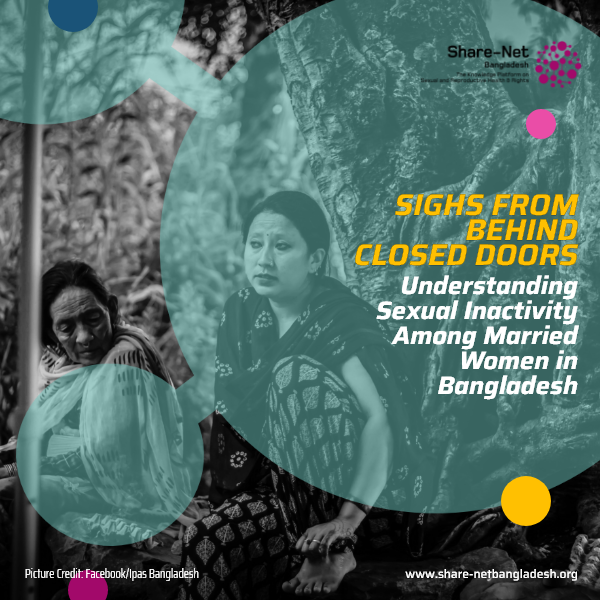Sighs From Behind Closed Doors: Understanding Sexual Inactivity Among Married Women in Bangladesh
Sexual and reproductive health rights (SRHR) are often spoken of in terms of access to contraception, maternal care, or menstrual hygiene. But there’s a quieter crisis unfolding behind the scenes: sexual inactivity among married women of reproductive age in Bangladesh. A recent analysis of the 2022 Bangladesh Demographic and Health Survey (BDHS) reveals that 6.72% of married women aged 15–49 reported no sexual activity in the last month—an alarming signal that goes far beyond bedroom dynamics.
This finding highlights the unseen burden of sexual inactivity, an issue increasingly recognised by global public health researchers as a marker of dissatisfaction, psychological distress, and strained relationships. “Sexual inactivity has recently been subject to increased scrutiny from public health perspectives,” states the study, which used data from 14,650 reproductive-aged women across the country.
Who Is Most Affected?
The data showed that married women living in Dhaka, Khulna, and Sylhet were significantly more likely to report sexual inactivity compared to those in Chittagong. Other key socio-demographic patterns emerged: women under 40, shorter than 164 cm, or whose partners were aged 30–40 or unemployed were more likely to experience sexual inactivity. Strikingly, those without a household head faced significantly higher odds of being sexually inactive.
While often overlooked, sexual inactivity has broader implications for SRHR: from gender-based violence (GBV) to the consequences of child marriage, where early unions often begin with coercion and rarely involve sexual agency. The study suggests that SRHR must go beyond contraceptive access—it must address bodily autonomy, marital power dynamics, and the psychosocial health of women.
SRHR in the New Era
According to Impact Global Health, global funding for SRHR research and development nearly doubled from $451 million to $889 million between 2018 and 2023. However, this funding surge hasn’t trickled down equally. Female-specific conditions remain underfunded, and there’s little focus on advancing research into the social dimensions of sexual health—especially in countries like Bangladesh.
Despite being a signatory to international frameworks like ICPD25, Bangladesh’s national budget on sexual and reproductive health remains insufficient, with most SRHR programs depending heavily on donor agencies and NGOs. “To overcome the problem of sexual inactivity, effective measures must be taken to improve women’s education and access to reproductive health services,” the study urges.
What Needs to Happen?
More inclusive SRHR funding—both global and national—must reflect lived realities like marital sexual inactivity, marginalized women’s struggles, and mental and sexual health gaps. With rising investments in SRHR globally, it’s time Bangladesh prioritizes comprehensive sexual well-being, particularly for fragile, rural, and underserved women.
📌 Meta Description (140 characters):
🏷️ Tag Words (SEO-friendly):

